
Justin Uy
-
Posts
32 -
Joined
-
Last visited
Content Type
Profiles
Forums
Store
Help Articles
Posts posted by Justin Uy
-
-

I'm calling this one "force in balance"
Protein is a piece of beef short rib meat taken from 3 short ribs that was stacked and bound with transglutaminase, sous vide for 72 hours at 57C, seared, and sliced into a cube with 3 sides seared dark and 3 sides freshly sliced and light.
It's sitting on top of a pillar of wilted and roughly chopped spinach.
The design on the plate is one half of homemade pesto, and one half homemade steak sauce.
-
This is looking like a Kickstarter I can get behind.
They actually met their funding goal this morning, so they'll be going into production with them if anyone is interested in picking one up. I'm already in for one.
-
Hey all,
I recently tried the Sous vide Earl Grey Gin/Earl Grey MarTEAni recipe at the SVS blog:
http://blog.sousvidesupreme.com/2011/01/sous-vide-infused-alcohols-syrups/
And the process of making the Earl Grey-infused gin intrigued me. I started thinking thinking about other things that I could do with the process, and the next thing to come to mind after the tea was coffee.
What I have in mind is some sort of coffee infused tequila or whiskey (sort of a riff on Patron Cafe or Irish Coffee). The problem is that my knowledge of coffees and teas is sorely lacking and I don't know what a reasonable starting point might be for the "brew" time and temperature for coffee (or other types of teas for that matter) since I assume there are some differences between brewing in water vs alcohol.
Any insights would be greatly appreciated, thanks!
-
-
-
Ooh, good point E. Luckily these particular pieces were top quality and from a butcher and fishmonger I trust, but in the future I'll definitely remember to give the area a pass with the torch to be sure.
I personally would be cautious about this unless you have sterilized the outer surface of the meat before making the incision since you aren't pasteurizing the meat.
When you make the incision, you will be making the interior non-sterile. So, when you cook you are going to be incubating any pathogens that managed to migrate with the cut -- and they won't be killed during searing.
So, unless this is beef that you would be comfortable eating raw and serving raw, you might want to consider sterilizing the outer surface of the meat prior to cutting it open. And, these should be scallops that you could eat raw, also since the surface of scallop's is also not going to be cooked enough to kill any pathogens on its surface.
Best,
E
This is an idea I posted a few pages back that several of you helped me get some ideas on how to execute. This is my Surf & Turf.
Top Left: The patients, one prime ribeye, and one cape U10 cape scallop
Top right: Surgery complete, the knob of fat under the rib cap was removed and replaced with the trimmed scallop, glued in with Activa RM.
Bottom Left: I knew the scallop and steak had different ideal times/temps, so I went with setting the bath hotter than my final temp to make sure the steak got to temp while the scallop didn't spend too long in the bag. Calculation showed that about 40 minutes in a 56C bath would hit a core temp of 52C. Seasoned simply with salt and pepper and seared in a cast iron pan.
Bottom Right: Science! The scallop had just the right consistency to stand in for the Ribeye fat, and brought that nice briny sweetness that scallops have.
All in all I'll call it a win and something I'd try again.
-
This is an idea I posted a few pages back that several of you helped me get some ideas on how to execute. This is my Surf & Turf.
Top Left: The patients, one prime ribeye, and one cape U10 cape scallop
Top right: Surgery complete, the knob of fat under the rib cap was removed and replaced with the trimmed scallop, glued in with Activa RM.
Bottom Left: I knew the scallop and steak had different ideal times/temps, so I went with setting the bath hotter than my final temp to make sure the steak got to temp while the scallop didn't spend too long in the bag. Calculation showed that about 40 minutes in a 56C bath would hit a core temp of 52C. Seasoned simply with salt and pepper and seared in a cast iron pan.
Bottom Right: Science! The scallop had just the right consistency to stand in for the Ribeye fat, and brought that nice briny sweetness that scallops have.
All in all I'll call it a win and something I'd try again.
-
Has anyone tried making the MC Garlic confit?
I made some on Friday via the SV method, and I came out with a really flavorful result, but I was unsure what the proper storage for it was, so I sealed it in the mason jar and tossed it in the fridge. It looked fine for the first day or two, but when I looked at it this afternoon there were some spots around the garlic where it looked like the olive oil was beginning to cloud, and when I checked the fridge just now, all of the oil appears to have congealed into a solid (but soft) green mass.
This is my first time making/handling any sort of confit, so I'm unsure if I handled something incorrectly or if this is an intended effect? Should I just pitch the batch? Maybe I somehow contaminated the oil when I spooned some out to baste a pork loin, or perhaps the jar wasn't clean enough to start with?
-
Thanks for the input all! It looks like I'll end up making a special trip to Jungle Jims in Cincinnati to try to hunt down some fatback.
-
Hello all,
So I just got my grinder attachment for my Kitchenaid, and my sausage stuffer will be coming soon. I'm interested in trying to make some sausages for the first time when they come in, but most of the recipes I've found call for pork fatback as the fat component of the sausage. The grocers near me aren't that great, and I haven't been able to source any locally.
I do have about a pound of leftover duck fat in the fridge though. I'm not sure what particular properties of fatback make it so popular for sausage making, but do you think frozen duck fat would be a serviceable substitute?
Thanks much,
Justin
-
Hanger steak is probably my favorite cut to do sous vide. I've got two of them sitting in the fridge as I type this.
I'm going to agree with the others and say doing it to temperature is the way to go. I've gone as long as 12 hours with it, and it didn't lose any texture, but it seems that the longer that it's in the bath, the more the kidney/organish notes come to the surface.
-
The only savory meringue recipe I know of was printed as "Anti-meringues" in Jeff Potter's Cooking for Geeks (great book by the way).
It uses egg whites and sugar in the standard proportion with the addition of Lactisole (marketed as Super Envision) which is a powder that, in small amounts, will neutralize the sweetness of sugar.
-
Really more of a pre-amble to dinner, but I thought I'd post it anyway:
Fergus Henderson's bone marrow recipe.
Oven Roasted marrow bones on toasted slices of baguette. salad of parsley, shallot, capers, lemon juice and extra virgin olive oil.
This was my first experience with bone marrow, cooking or eating, but it definitely won't be the last! The marrow was super rich, and the counterpoint from the acid of the salad was perfect.
-
Hm... I am really not familiar with Lactisole at all. What does it do exactly? If it neutralizes the sweetness it could be a very useful tool indeed. I am going to start experimenting with all these different approaches this week. I will report back as to what my best results are.
It's a powder product that temporarily suppresses the tastebuds ability to perceive taste. It's primarily used in products that require large amounts of sugar for chemical or texture reasons, for example making a normally textured jam or jelly without being overly sweet, or making a meringue without the overly sugary taste.
Domino markets lactisole as "Super Envision"
-
The first difficulty could arise depending on your definition of savory. The pop rocks, neutral or flavored, are made of sugars and they are sweet. I'm not sure you'd get sufficient powder to cling to them to overcome or at least balance that just by tossing them with a powder.
Could try adding Lactisole to whatever the flavor mix will be. A very small amount will neutralize the sweet sensation in food which should reduce the amount of other flavoring that you'd need to overcome the sweetness.
-
Hey all, I wanted to ask for some advice on approaching a recipe.
If memory serves, my first exposure to the concept of sous vide was years ago on an episode of the Japanese Iron Chef where the challenger for whom sous vide was a specialty. One of the dishes he made that always stuck out in my mind was a surf and turf dish in which he hollowed out the middle of a filet mignon and filled the void with a big diver scallop which he cooked in the water bath.
Unfortunately for me, the last time I saw this episode was probably 10 years ago, and at the time I never figured I'd be attempting any sort of sous vide cooking for myself, so I'm somewhat lacking on the details, but I'd love to try to reconstruct this dish. If anyone's attempted something like this before, I'd love to hear your advice so that I don't go messing up good ingredients.
What I have in mind is:
-For examples sake for this post, I'm going to assume the steak and scallops are about 3-3.5cm in thickness, so that the numbers I'm quoting make sense.
-I've done filet and scallops each individually before, and I've liked them both at a core temp of 50C, so I think it should be a good match in terms of the final done-ness
-Use Activa RM to bond the scallop to the steak.
So my thoughts about possible issues with the process are these:
-Doing the scallops individually from the fridge to 50C only takes about 20 minutes, where doing the filet takes about 80 minutes (times from experience, and tables in Modernist Cuisine). Will the scallop be done to death by the time the filet gets where it needs to be? Or can I count on the filet being wrapped around the scallop to provide some "insulation"?
-If I do go with the ~80 minute cook time, I'm troubled because the originating dish from Iron Chef, by their rules, was done in under 60 minutes, so I'm not sure what to make of that. Steak/scallop was cooked very rare? Steak started from room temp instead of fridge? Bath at temp higher than final core?
-Best way to cut a scallop sized hole in the center of a filet? EDIT: Another thought I just had...instead of doing this with a filet, perhaps I can find some ribeyes with a big knob of fat between the cap and the eye, and replace that with a scallop? hmmm.
-Any thoughts on what sauces/accompaniments would go well with both steak and scallop?
Thanks a lot in advance!
EDIT:
So through the miracle of the internet, I found these videos that show the dish being prepared. The chef was Senji Osada in a Scallop Battle with Hiroyuki Sakai. He says that he's going to cook them to 55C, but he doesn't drop them until about halfway through the challenge, so they couldn't have been in there for more than 25 minutes O_o
-
Hi all,
Sorry if this has been asked before, but I wasn't able to find it in the thread.
I'm thinking about picking up my first pressure cooker in the near future and I had a question about features.
How important is variable pressure when considering a cooker? I'm receiving my copy of Modernist Cuisine soon, and I'm interested in trying several of the PC recipes. Do most recipes use a "standard" pressure? If I do get a cooker that is locked at one pressure, is there a formula or guideline for adjusting cooking time for a recipe that recommends a different pressure?
Thanks much,
Justin
-
But how much of a concern is that, really, since most of the oven-roasting times are at least that long?
I think part of the issue in the SV is that it's an anaerobic environment. The pathogens that are at work (botulism I think) are different than what would be of concern in the oven.
-
Somewhat shameful, but I thought I'd share tonight's dinner:
Sous Vide Ribwich
I didn't really have a recipe in mind when this one started, but I was at the market and found a package of beef back ribs for $2.29/lb. I figured I could almost certainly do something with that, so I scooped up $4 package. Bagged up with kosher salt and black pepper, dropped in the SV at 60C and promptly forgotten about for 3 days.
Top Left: Out of the bags, and briefly seared on the stovetop to get some extra flavor/texture. Still not entirely sure how I'm going to have these for dinner.
Bottom Left: Noted that the beef rib bones have some awkward angles that would make taking them straight to the face awkward. Opt to shred the meat off the bones with some forks
Right: I ponder trying to make a pan sauce with the drippings from the meat, but in the spirit of cheapness and laziness, I notice leftover buns from the previous night's short rib sandwiches, and a long forgotten bottle of KC Masterpiece BBQ sauce in the back of the fridge. Win.
Thoughts: Milder than the short ribs I've been doing, a bit firmer and less fatty. Perfect texture for a barbeque sandwich, but I feel like the sauce was cheating. Don't own a smoker for doing real barbeque, but I wonder how liquid smoke would do in the sous vide.
-
My Old School New School Meat and Potatos:
Short ribs seasoned with salt and pepper and sous vide at 60C for 72 hours, russet mashed potatos with a bit of white cheddar and a straight demiglace for gravy.
I really wanted to slice the short ribs on an angle for a standing geometric-ish presentation, but the short rib was so tender that I couldn't slice it with my chef knife.
-
Latest thing to come out of my sous vide, based on a recipe on Seattle Food Geek:
Lamb flatbread with feta and roasted tomato.
The lamb was a shoulder chop sous vide at 56C for 24 hours with salt and pepper. I think I may have overdone the sear just a bit, but the lamb was still tender and juicy. Those store bought pitas were unfortunately pretty tasteless and cardboard-like

-
Ugh, so in a yet another "never again moment". I sous vide a ribeye with salt/pepper/cayenne and went to sear it off in a skillet with canola oil on high heat.
The smoke that was coming off it near the end of the sear was like pepper spray and had me hacking up a lung, I can only assume that was courtesy of the cayenne. Not going to attempt that again until I figure out that issue.
Did I do something particularly wrong here? I know I've seen seared meats with cayenne involved before, and none of them mentioned noxious fumes.

-
Never again will I try to sear anything with extra virgin olive oil!
Still clearing the smoke out
-
I've had results unlike other preparation I've ever had doing short ribs sous vide at 56.5C for 72 hours. Perfectly medium rare, but cuts with a fork. Loads of intense beef flavor.
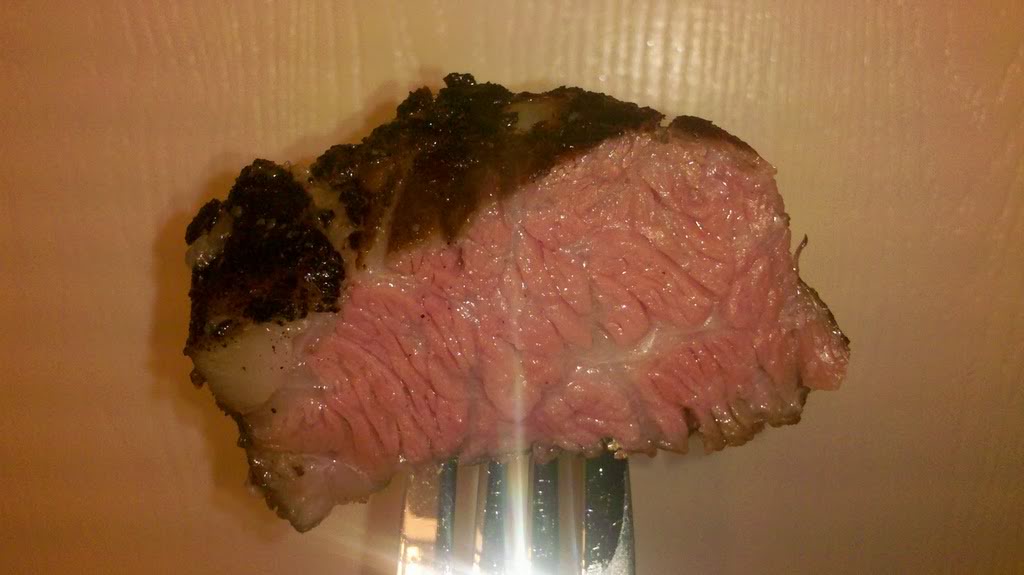


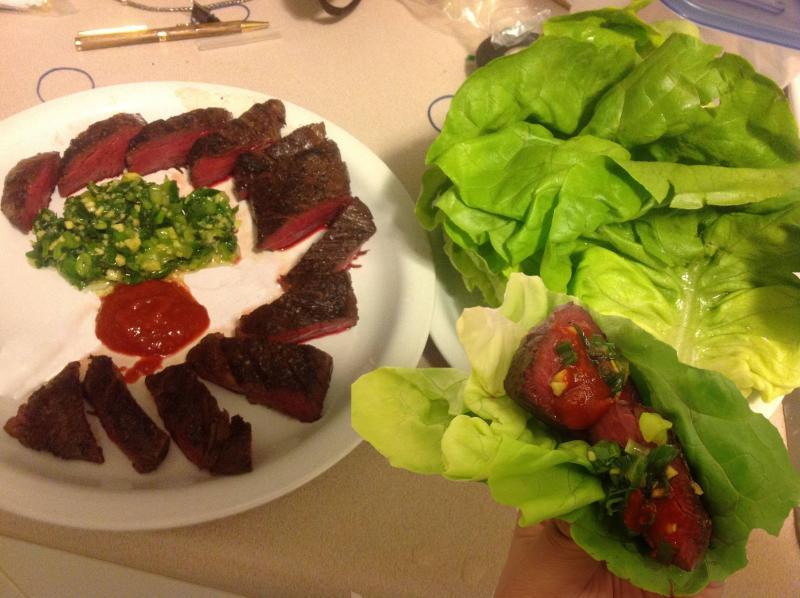
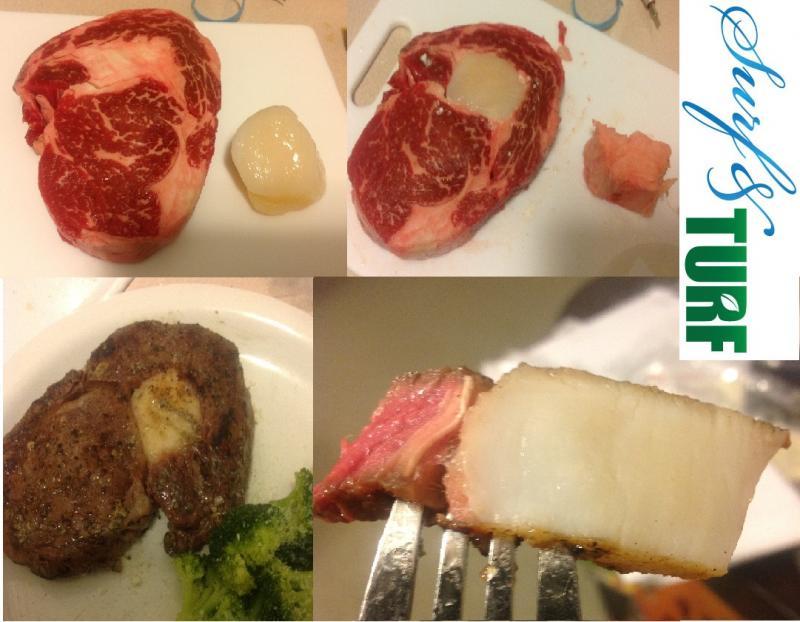
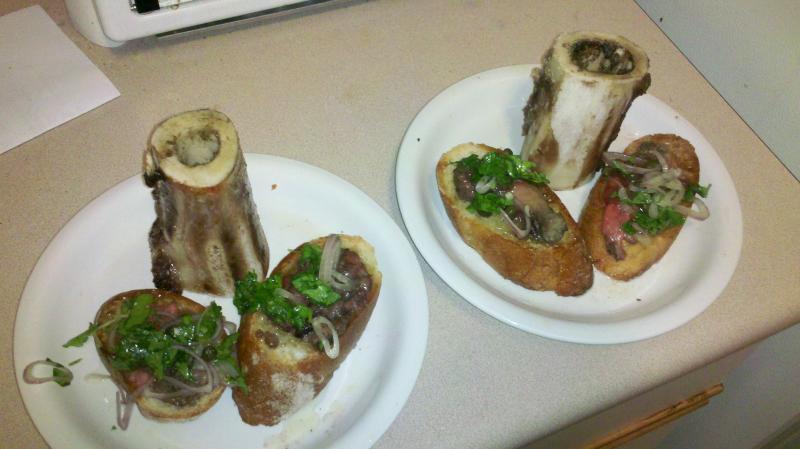
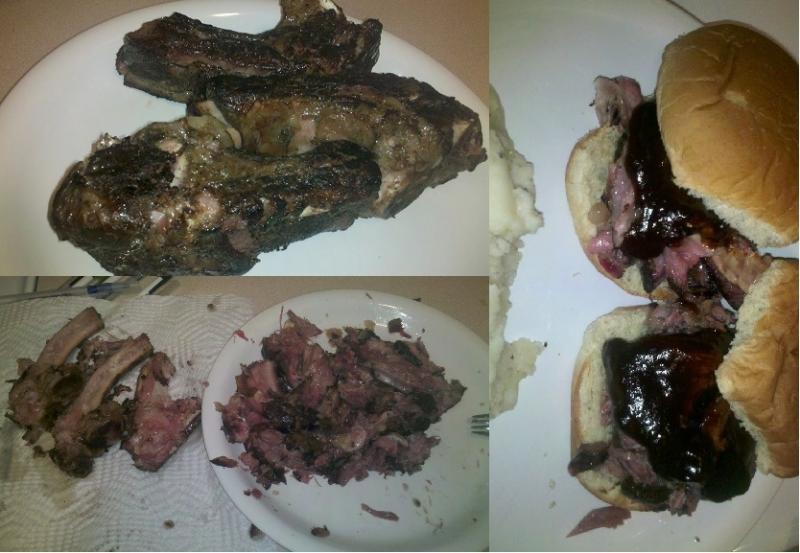
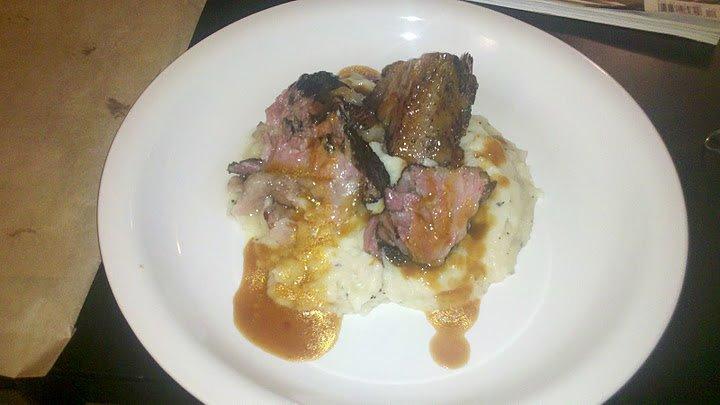
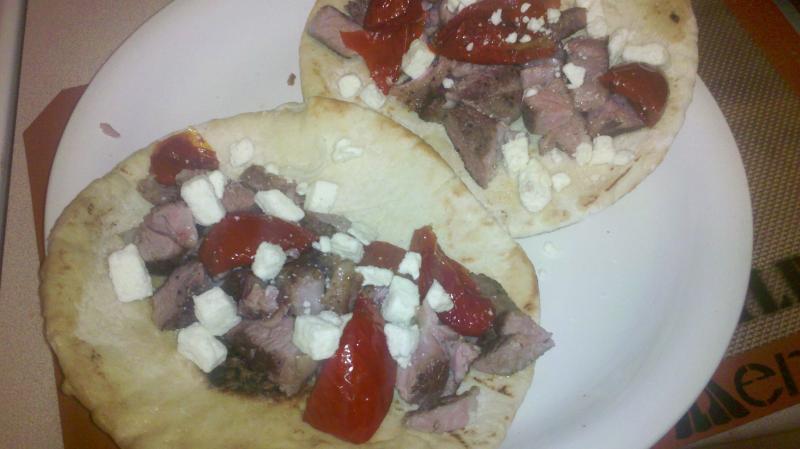
Sous Vide: Recipes, Techniques & Equipment, 2012
in Cooking
Posted
Anyone here ever tried to SV a beef tenderloin chain? I've never cooked with it before, and none of my books have references, so I'm unsure whether I should treat it like a tough cut and give it a long time or a tender cut and just bring it to temp.